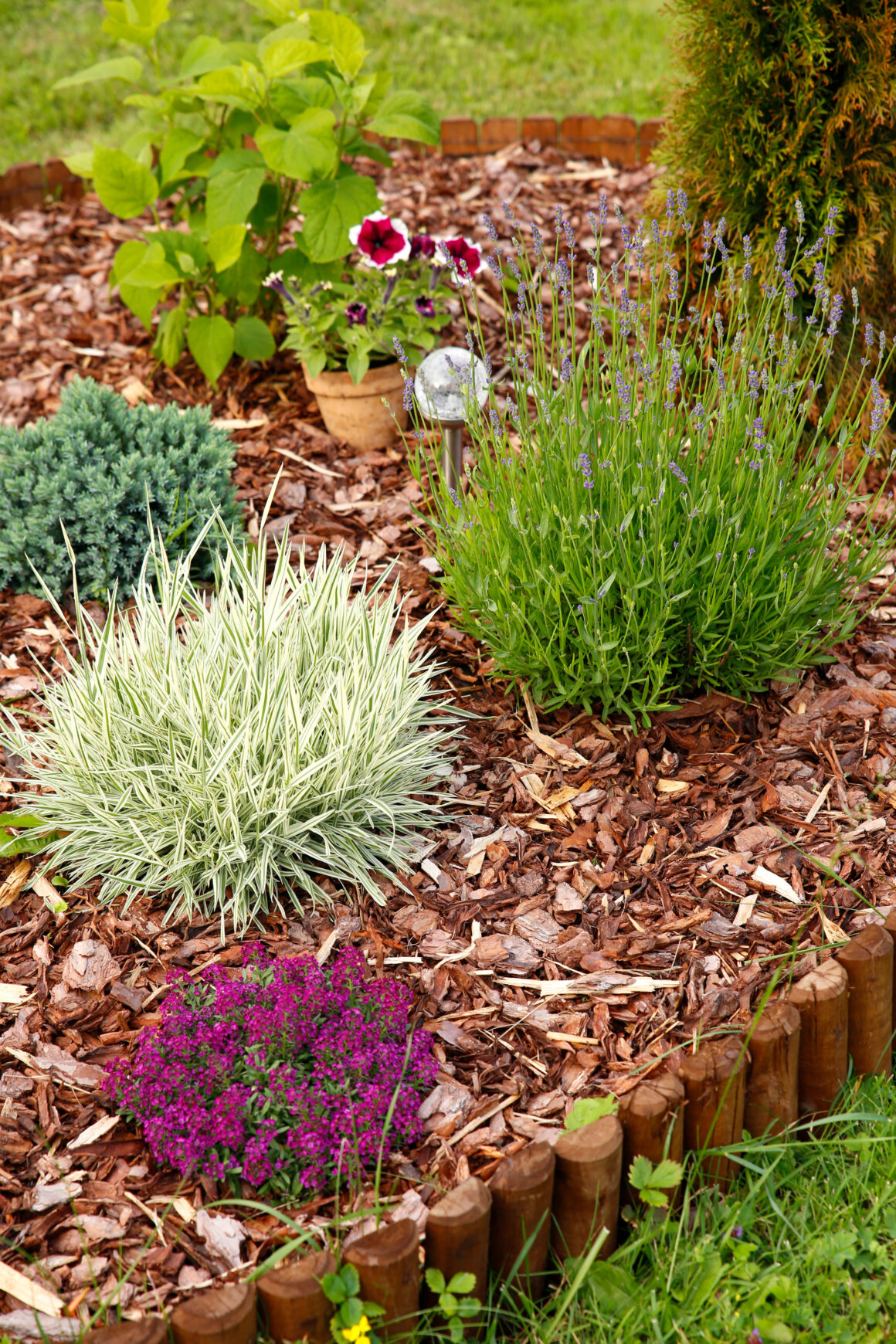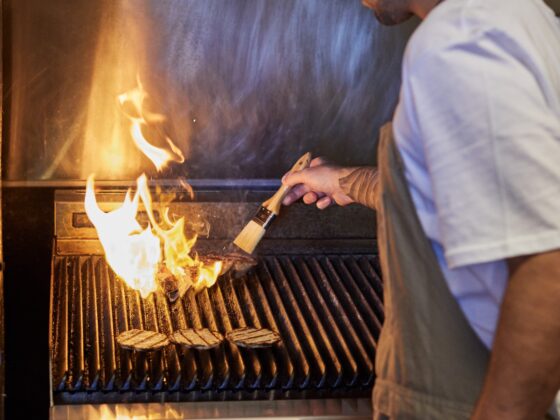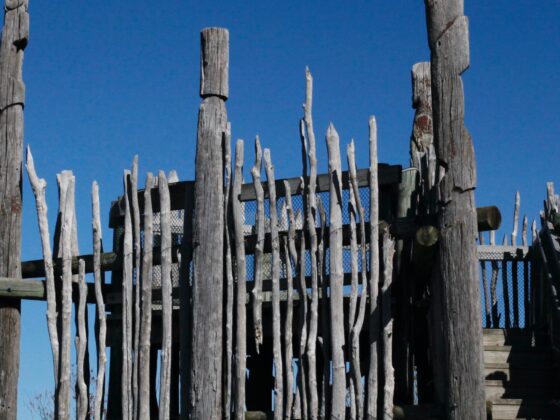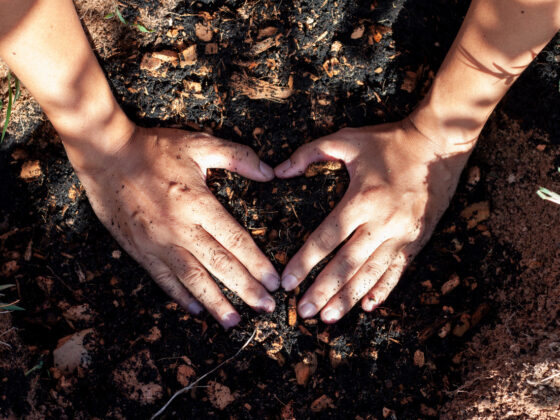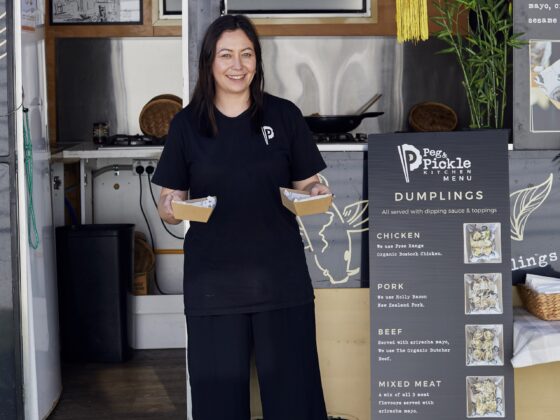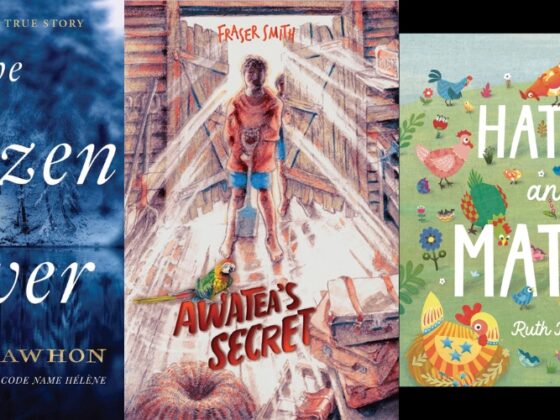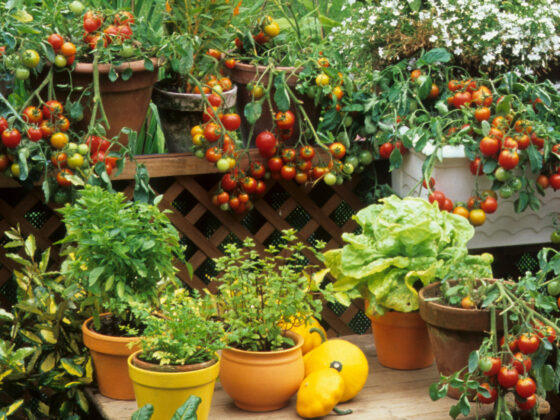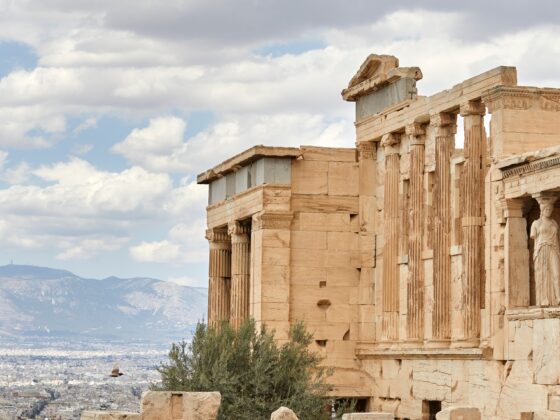Winter is a good time to look around and begin planning the next year of planting in your garden. Green Door’s Kelly Jean has some great options for you and some gems of ideas for creating that special outlook or sorting your seasonal colour and fruiting options.
Ideally, in your garden there will always be a tree or shrub providing interest to catch your eye. If space is unlimited, carefully choose a variety of trees that provide interest at different times throughout the year. If space is more limited, consider trees that provide many points of interest throughout the year. For instance, a flowering cherry tree can have blossom in spring, autumn colour and decorative bark in winter.
Of all the seasons, winter is one of the best times during the year to have plants that stand out when so many are dormant and bare. When leaves fall, it gives such an opportunity for other aspects to shine.
There are, generally, an abundance of choices through spring, summer and autumn, so take the time to plan, ensuring there is always something to catch the eye as the seasons pass.
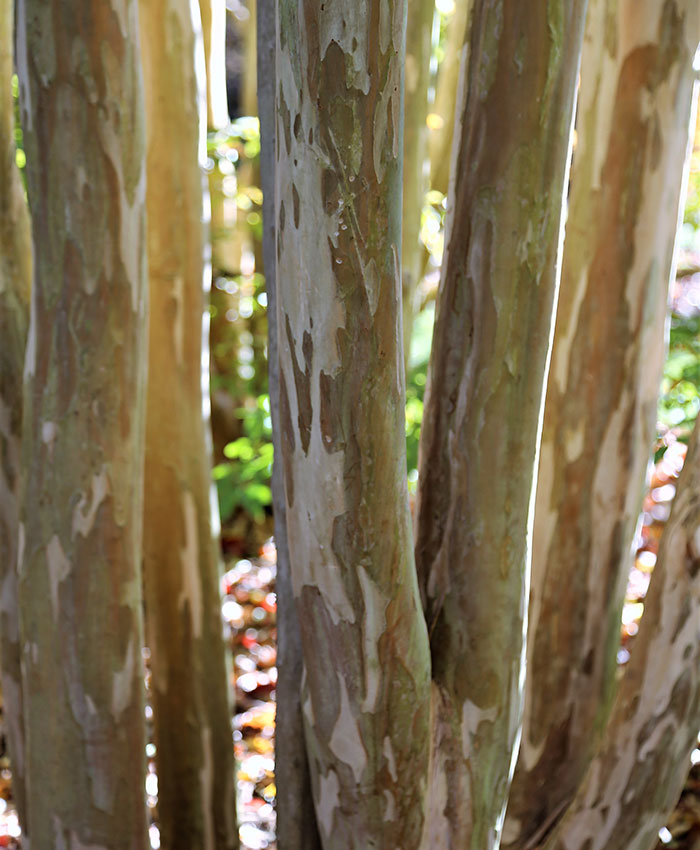
Decorative Bark
Decorative bark on trees can be coloured or have a textured effect. This feature is often most effective when planted together in a clump or avenue of trees.
Winter options:
Silver birch (Betula varieties), red or yellow-stemmed
dogwood (Cornus alba ‘Siberica’), crepe myrtle
(Lagerstroemia), red-stemmed maple (Acer senkaki)
Year-round options:
Flowering cherry (Prunus varieties) grafted on a Prunus serrula trunk, Acer griseum ‘Paperbark’ and Acer davidii ‘Snake Bark’ maples

Berries or Fruit
Some trees hold on to their fruit long after they drop their leaves. They look beautiful and they provide a winter food source for birds and so attract them into the garden. Summer is of course the time that our fruit trees come into their own, with the beautiful harvest that looks as good as it tastes! If size is an issue, there are fruit tree options that are high yielding, while being dwarf or columnar in shape.
Winter options:
Crabapples, persimmon, hawthorn (Crataegus)
Summer options:
Apple, plum, peach, nectarine, pear
Dwarf options:
Apple ‘Croquella’, Apple ‘Scarlet Spire’, Peach ‘Pixzee’ and Nectarine ‘Garden Delight’

Shape or Tree Branch Structure
Don’t underestimate the drama of bare branches, particularly when they have an unusual or distinctive branching structure. These are most effective when they are in the open, so they can stand out on their own.
Weeping trees take on a lovely structural appearance when bare. Trees that have a columnar shape create a strong vertical element are striking at any time of the year, drawing the eye up and along through the garden.
Year-round options:
Wedding Cake Tree (Cornus controversa ‘Variegata’), Robinia ‘Lace Lady’, Weeping maples, flowering cherries and elms, Apple ‘Scarlet Spire’, ‘Ballerina’ apple and crabapple series
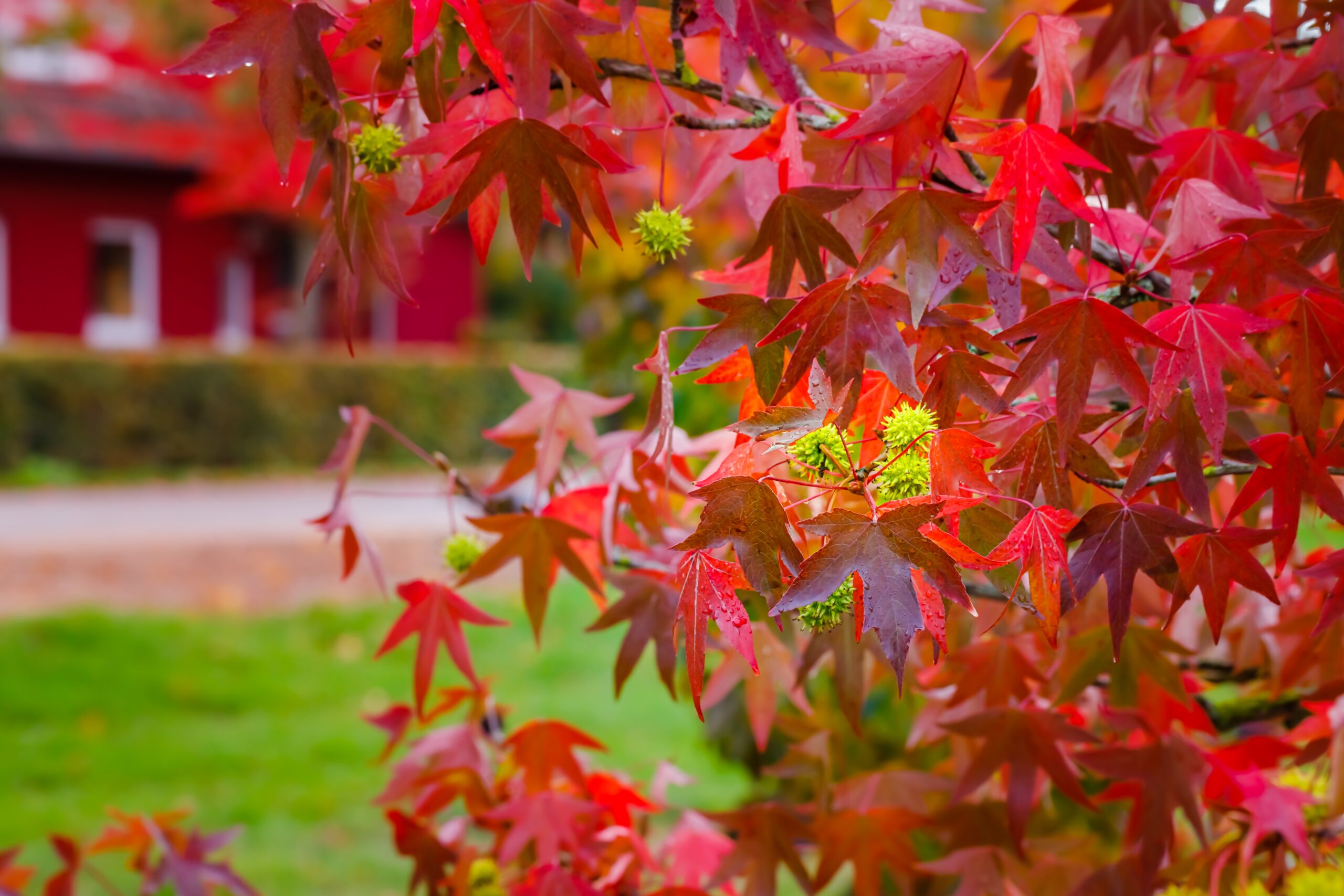
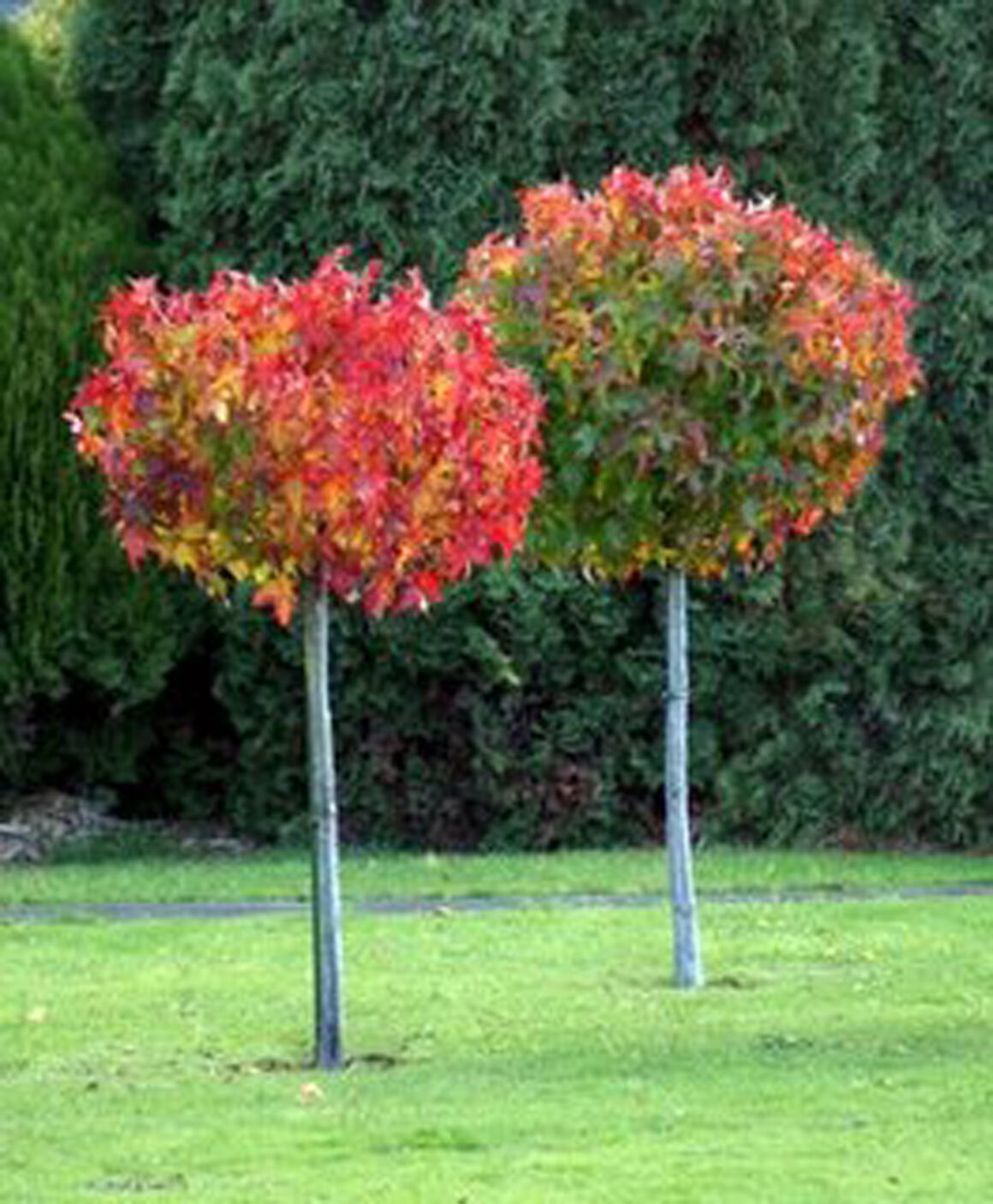
Tree Size
Think outside the box when choosing statement plants. There are a number of dwarf trees that will add structural interest on a different scale to the usual tree choices.
Year-round options:
Dwarf stonefruit trees, Ginkgo bilboa ‘Ming Princess’, Robinia pseudoacacia ‘Lace lady’, Liquidamber styraciflua ‘Gumball’ and miniature Japanese maples
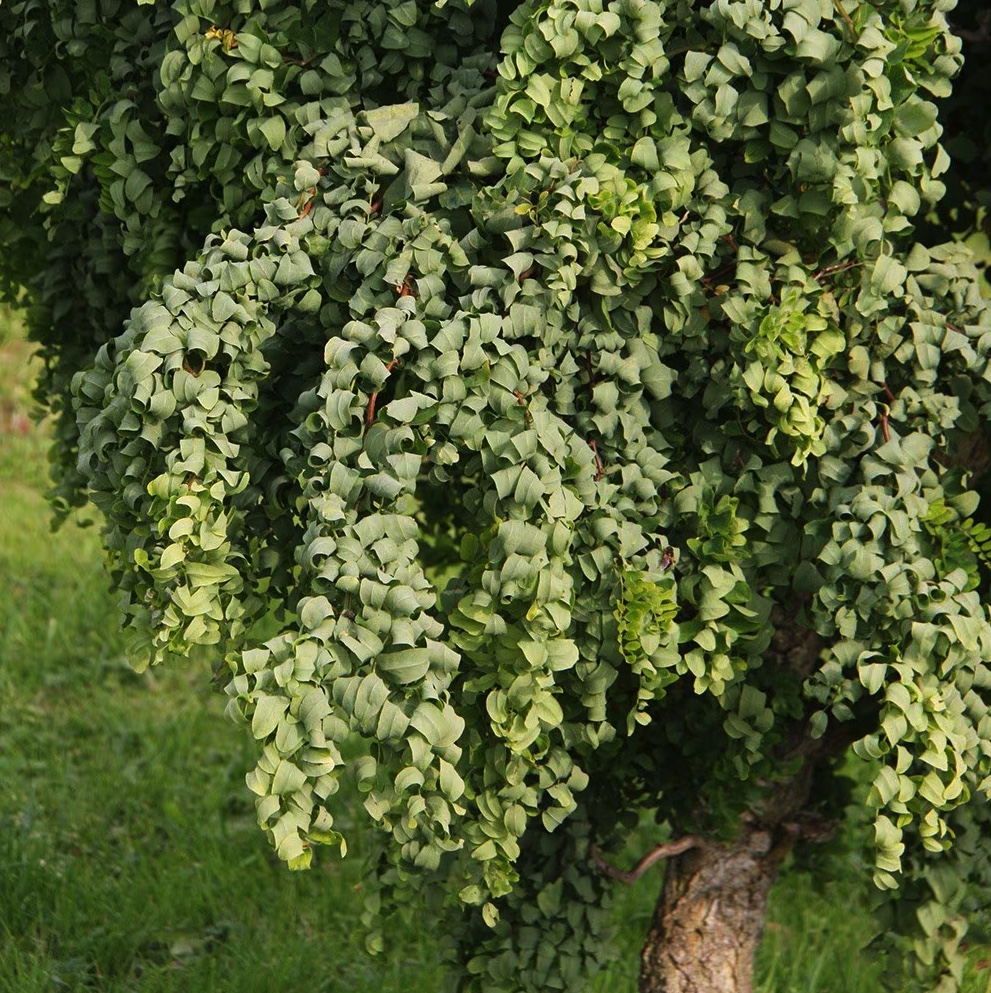
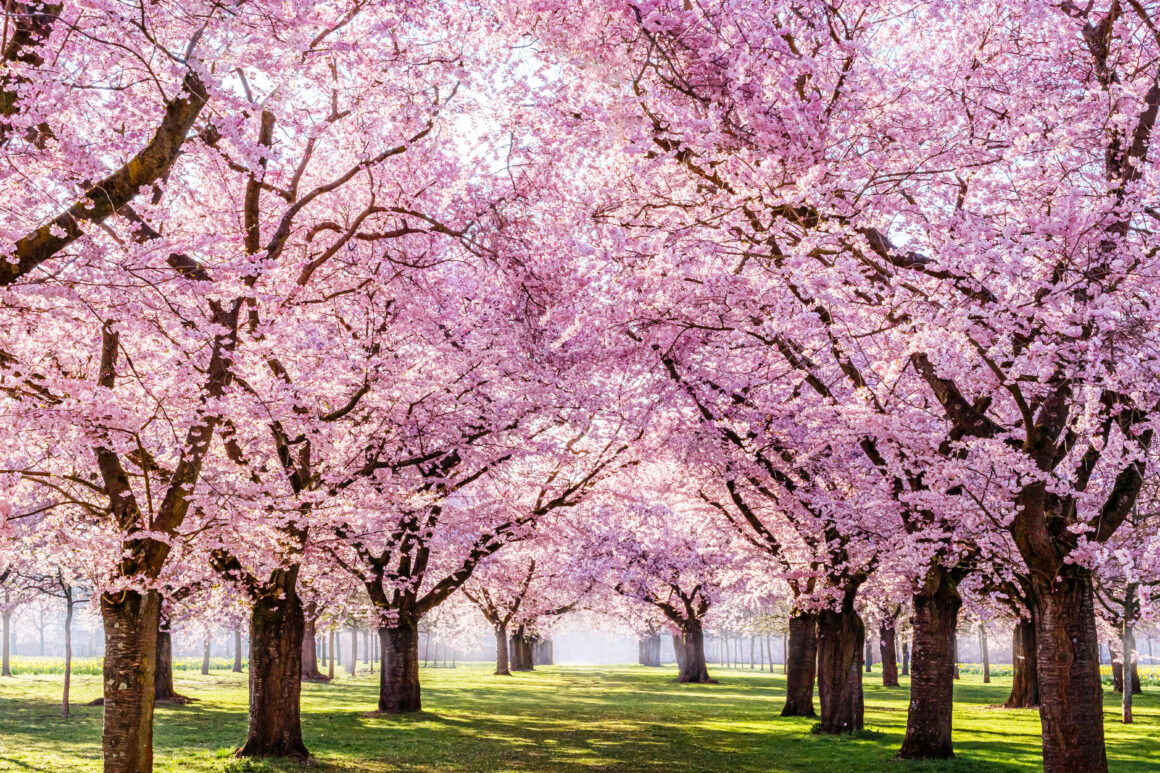
Blossom
Spring is synonymous with blossom as the trees burst into life after their winter rest. Blossom is not always long lasting (particularly if they are in an exposed spot), but with some planning, you can extend your blossom show by planting various species of the same tree family, which flower at slightly different times or have a succession of trees that flower.
Consider what colour you want your blossom to be as they range from dark pink through to white and if you want single or double blooms. If you have late frosts where you live, choose the later-flowering options as frost can turn a bloom-laden tree to brown mush overnight. Summer flowers can be a little more subtle than the spring blooms, as they are often tucked in amongst the leaves, but this doesn’t stop them being a feature.
Spring options in order of blooming time:
Magnolias, flowering cherries, dogwoods
Summer options:
Lagerstroemia (Crepe Myrtle), Albizzia julibrissin (Silk Tree), Calycanthus ‘Hartlage Wine’
Evergreen (and frost tender) options:
Pohutukawa and jacaranda
Fragrance
There are a number of deciduous shrubs and trees that have distinctive fragrances. Spread them out around the garden, but take care to position them so you will walk by them and get to enjoy their fragrance at the right time. For something different, the falling leaves of the Katsura Tree (Cercidiphyllum japonicum) are not only beautiful colours but they have a sweet caramel scent when the leaves fall.
Winter-spring options:
Wintersweet (Chimonanthus praecox), mock orange (Philadelphus), evergreen or deciduous magnolia (Michelia)
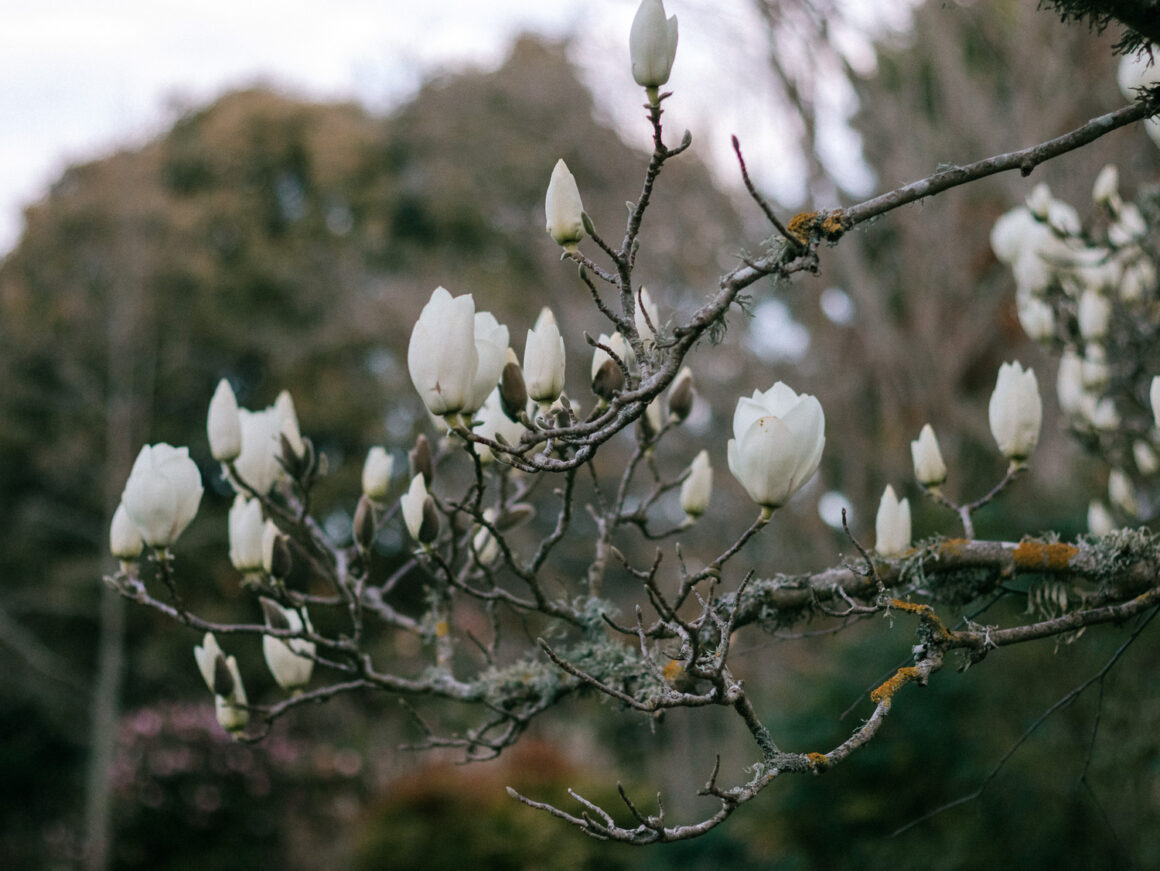
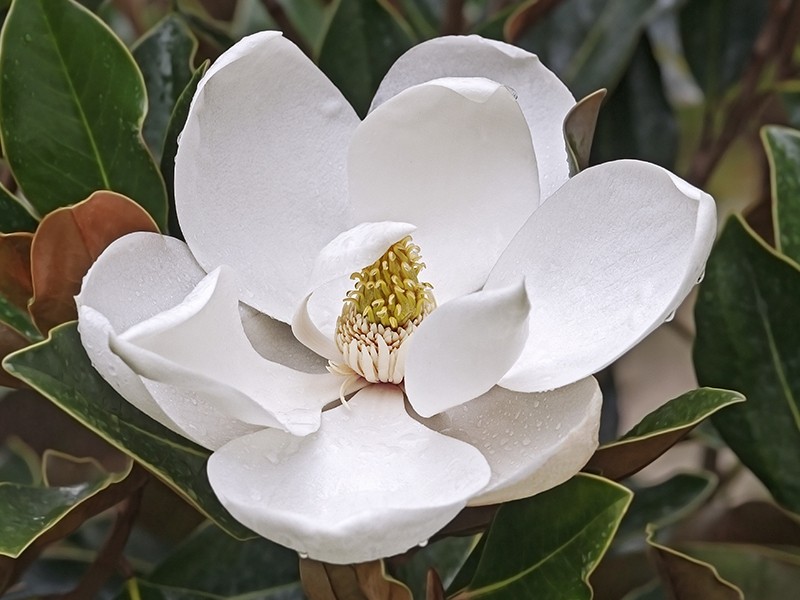
Summer option:
Syringa (Lilac)
Evergreen options:
Evergreen magnolia ‘Kay Parris’ or ‘Teddy Bear’
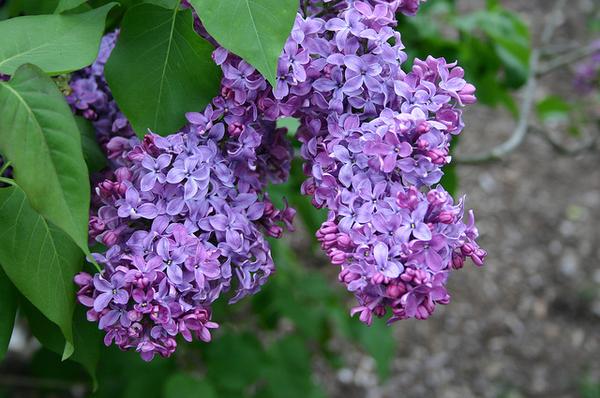
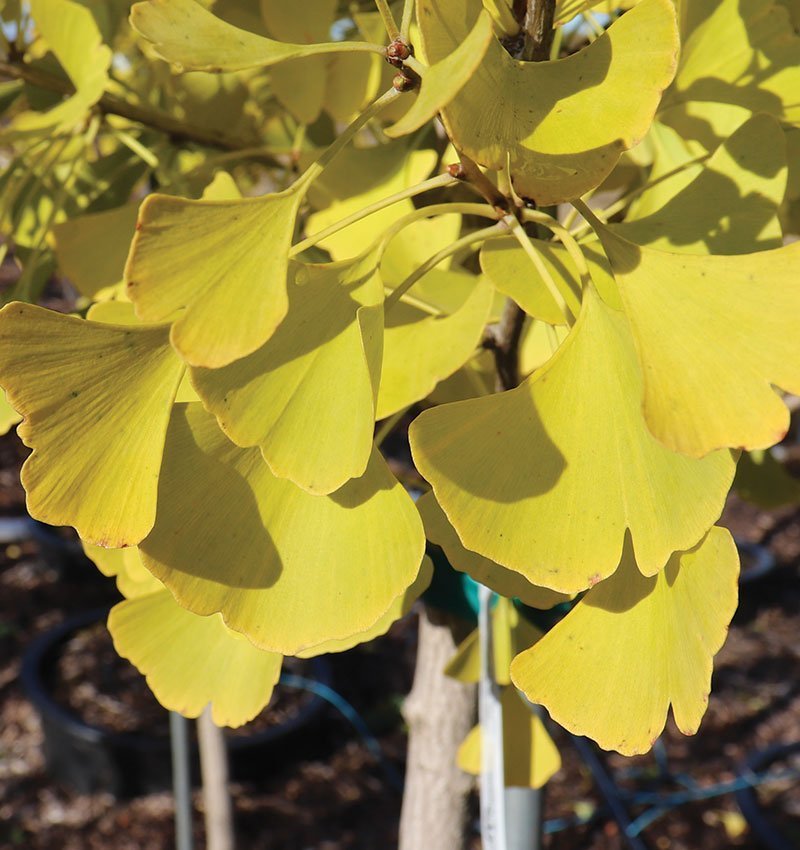
Leaf Colour and Texture
The brand-new leaves that unfurl each spring can start out one colour and mature to their summer colour. Leaf texture and shape is another way to add interest. Don’t forget trees with variegated leaves – leaf markings in a contrasting colour such as cream or pink. In summer, leaves become a feature if a tree is placed where the sun is behind it, making the leaves glow.
Autumn options:
Acer varieties (maples), liquidambar varieties are good in warmer climates, ginkgo varieties (Maidenhair Tree). Nyssa sylvatica (Tupelo) is good in wetter soils
Spring options:
Maples, ginkgo varieties, Cercis canandensis ‘Forest Pansy’, tri-colour Beech, Cornus controversa ‘Variegata’ (Wedding Cake Tree)
Summer options:
Pyrus salicifolia ‘Pendula’ (Weeping Silver Pear), Cercis canandensis ‘Ruby Falls’, Fagus sylvatica ‘Purpurea’ (European Copper Beech)
Take your garden to the next level by taking note of the existing interest points and features through the seasons and then planting strategically to create a garden with features and interest throughout the year.

